UNIT 3 BIOCHEM: Carbohydrates
1/39
There's no tags or description
Looks like no tags are added yet.
Name | Mastery | Learn | Test | Matching | Spaced |
|---|
No study sessions yet.
40 Terms
What are the two classes of carbohydrates?
ketones and aldehydes
T or F. Carbohydrates are a major portion of our caloric intake?
True. Carbohydrates are really important for many of our bodily functions. For example, carbohydrates are source of energy, a lubricant found between joints, and an adhesive found between cells
Which functional group is commonly found in carbohydrates?
alcohols
Draw d-glucose
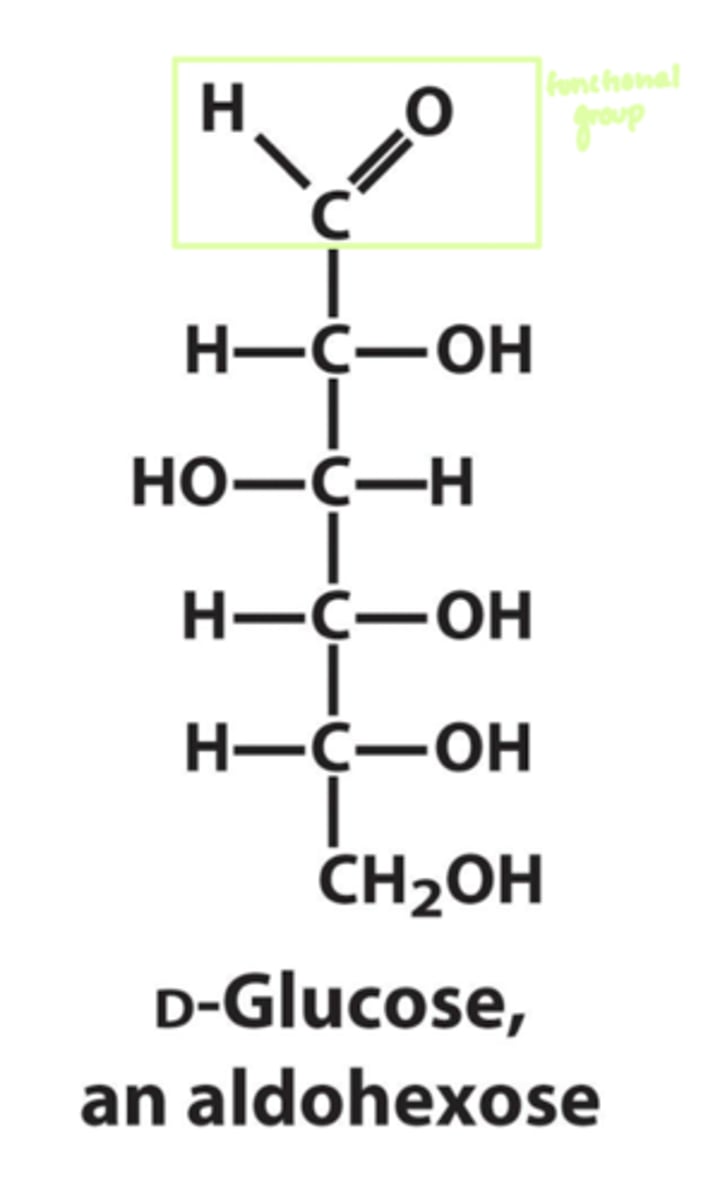
What type of carbohydrate is glucose?
An aldohexose
Draw d-fructose
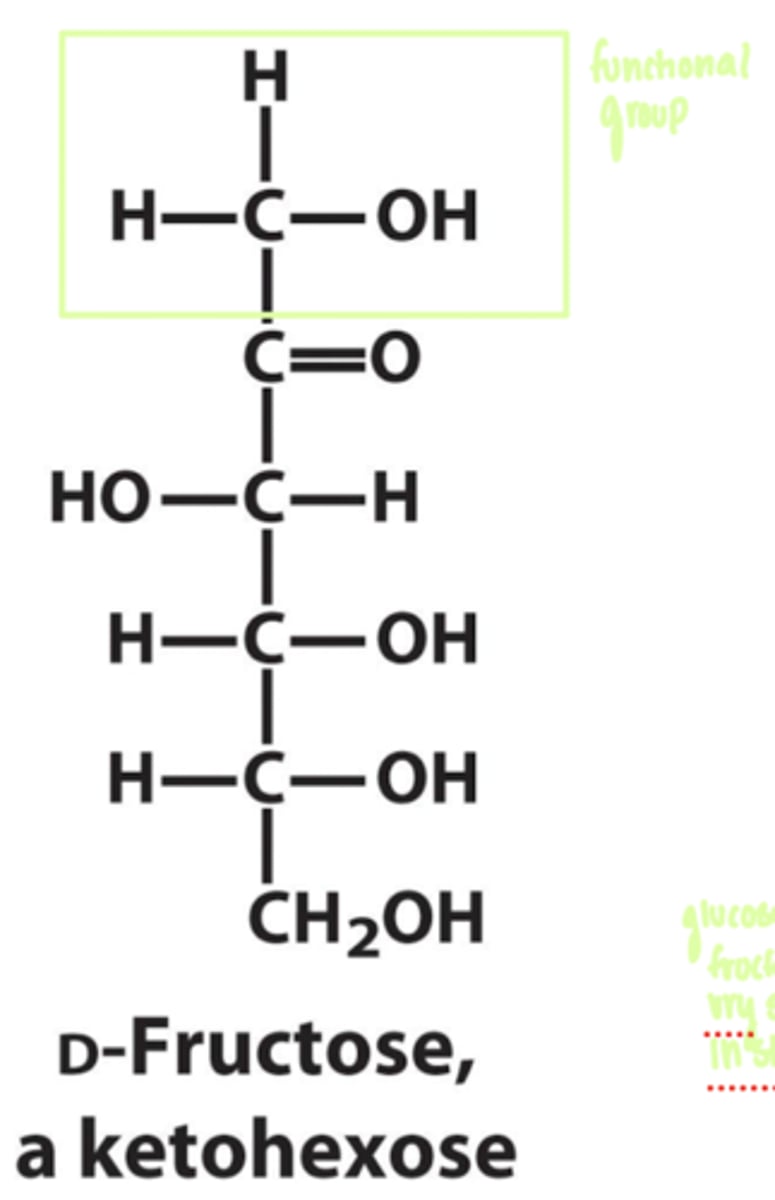
What type of carbohydrate is d-fructose?
a ketohexose
Epimer
isomers with different configurations of atoms around one of several asymmetric carbon atoms present
What are the epimers of glucose?
D-mannose and D-galactose
Draw d-mannose
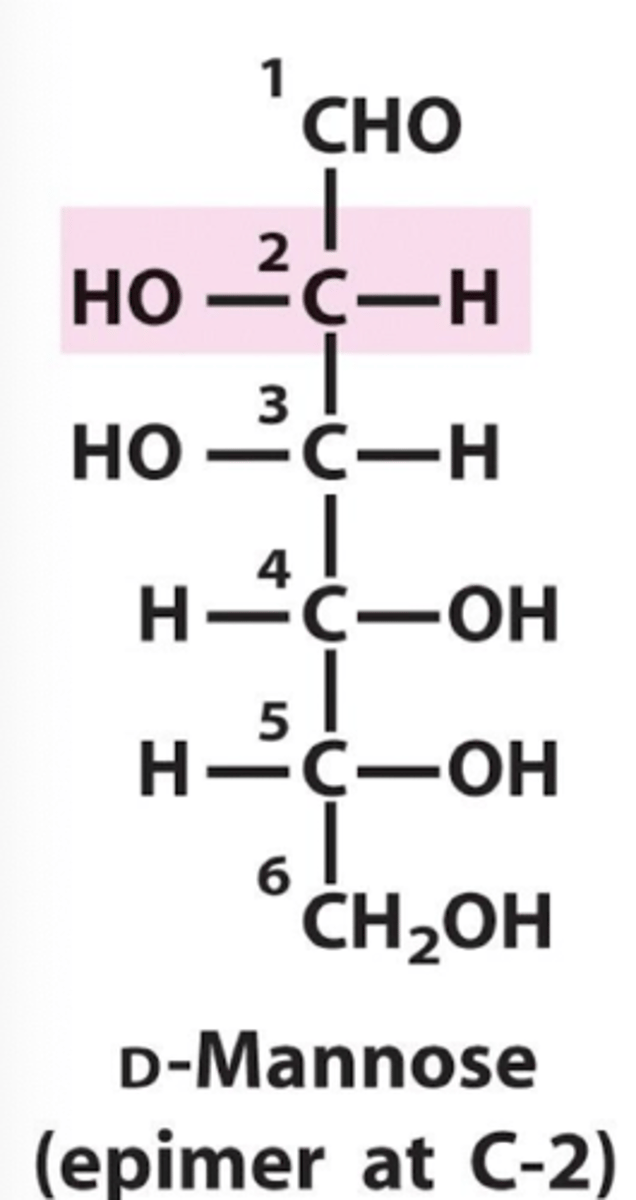
Draw d-galactose
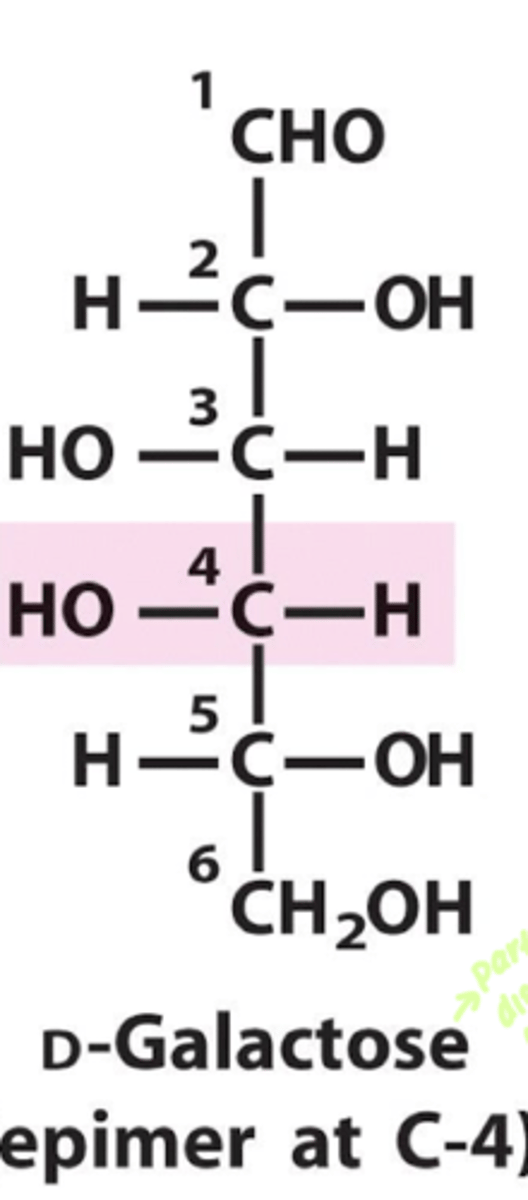
What structure is glucose in solution?
Glucose is cyclic in solution (but all 3 forms are present
Draw alpha and beta glucose
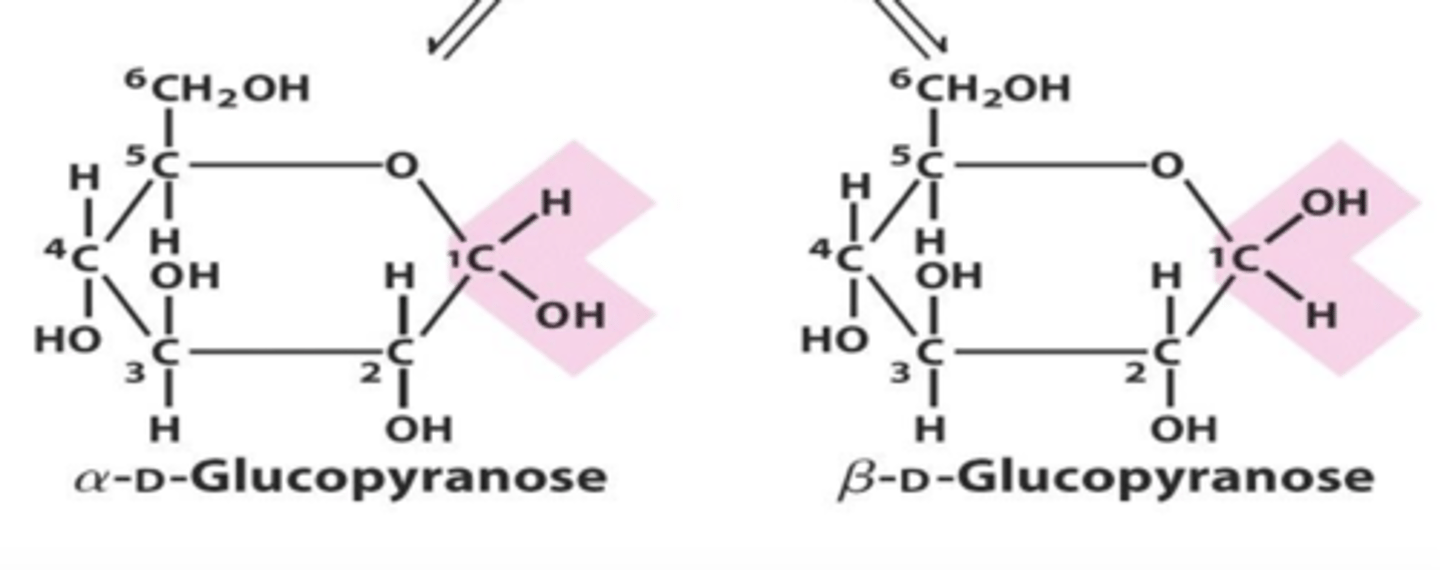
Polysaccharides
Carbohydrates made up of more than two monosaccharides
Monosaccharides
Single sugar molecules
Disaccharides
Carbohydrates made up of two monosaccharides; sucrose and lactose
What are two common polysaccahrides?
Starch and glycogen
What is glycogen made of?
glucose
What type of linkages are found in glycogen?
alpha 1,4 linkages and alpha 1,6 linkages
Draw an alpha 1,4 linkage

Draw an alpha 1,6 linkage
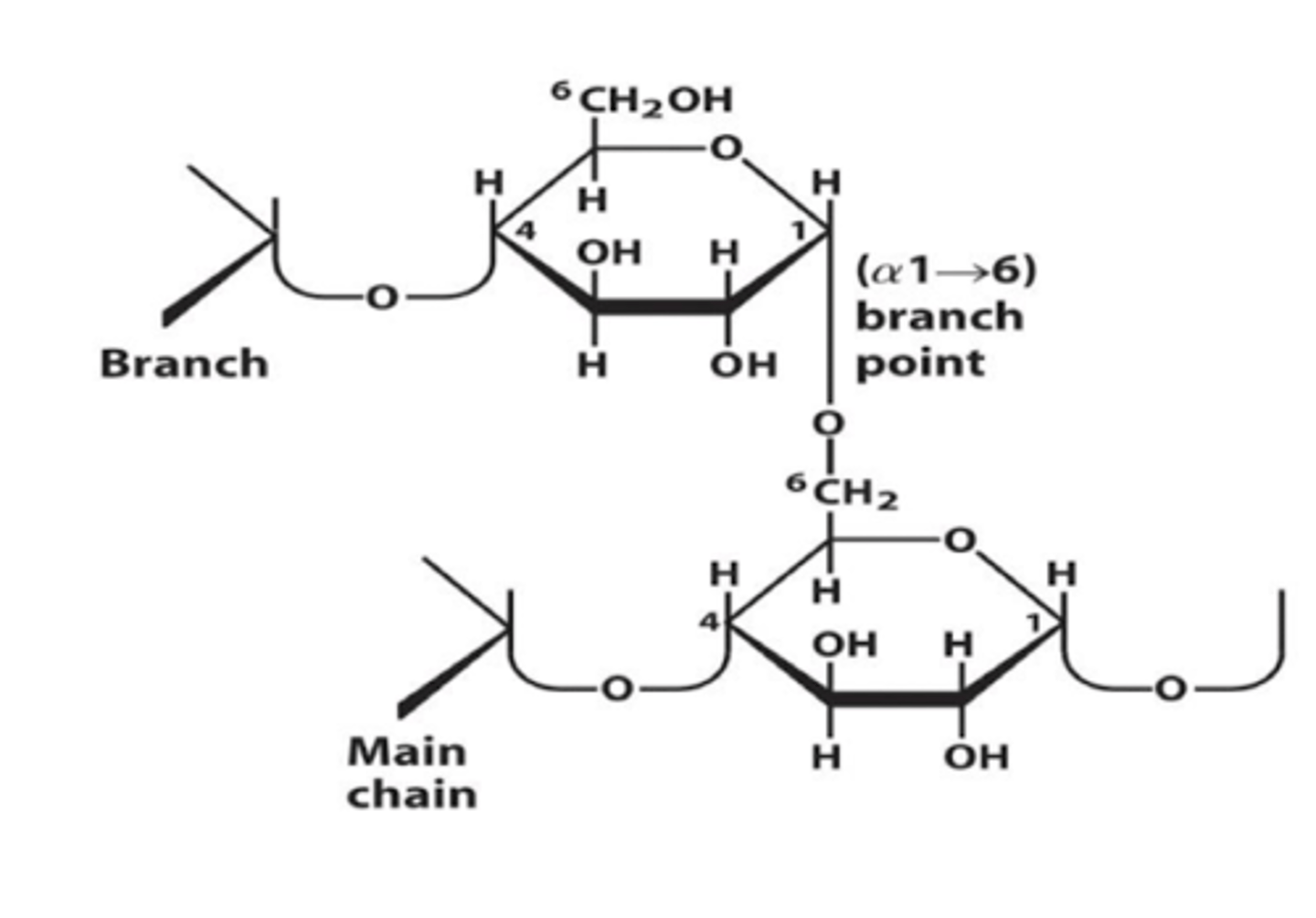
what is Glycogen; draw it
a polymer of glucose that is similar to amylopectin, but more extensively branched.
the storage form of carbohydrates
Why does glucose have to be stored as glycogen?
1) If glucose is stored freely in the cell, the concentration of glucose in the cell would be greater than the concentration of glucose out of the cell, meaning active transport would be needed to move glucose
2) If more glucose is in the cell than out of the cell, water will want to flood into the cell, causing the cell to burst
3) Free glucose will automatically enter glycolysis. Glycogen allows the body to regulate glycolysis
3)
Are glycogen synthesis and degradation simply the reversal of the pathway?
No, glycogen synthesis and breakdown have different pathways
What is glycogen synthesis and degradation controlled by?
hormones
Which enzymes are required for glycogen degradation?
1) Glycogen phosphorlyase
2) Debranching enzyme
What is the role of glycogen phosphorylase?
cleaves the alpha 1-4 linkages of glycogen, forming glucose 1-phosphate
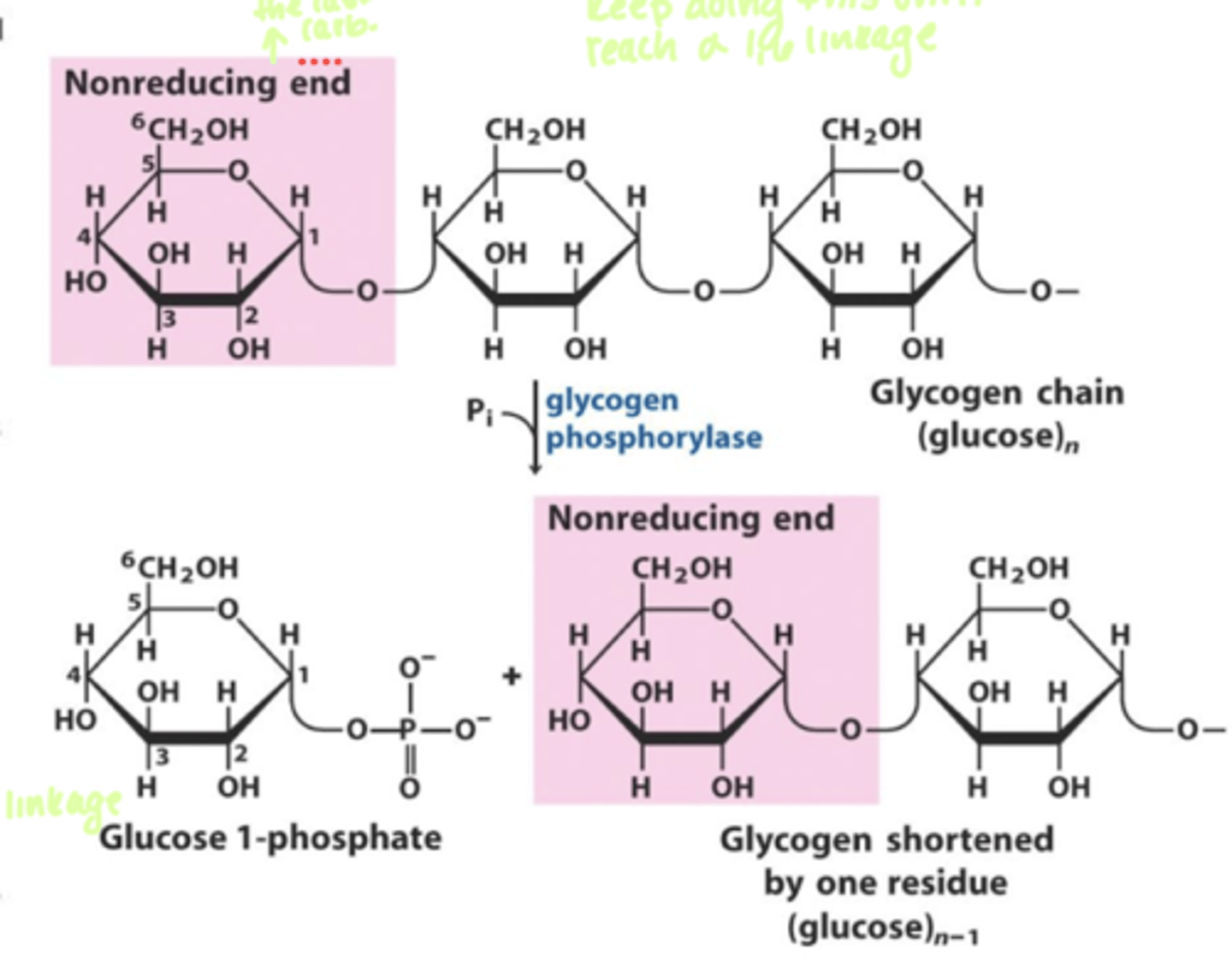
What is the role of the debranching enzyme?
The debranching enzyme has two roles. It has a transferase activity, which exposes the alpha 1,6 linkage, and an alpha 1->6 glucosidase activity, which cleaves the alpha 1,6 linkage
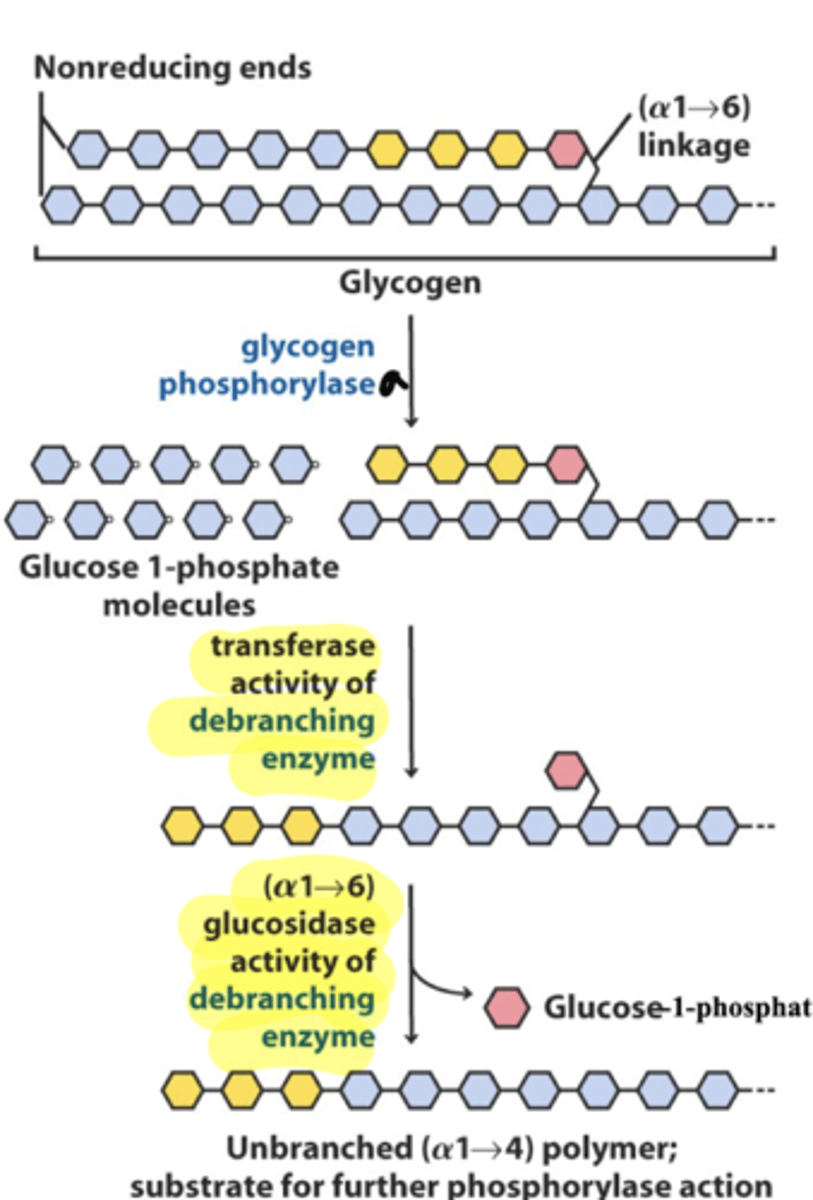
Draw out glycogen degradation
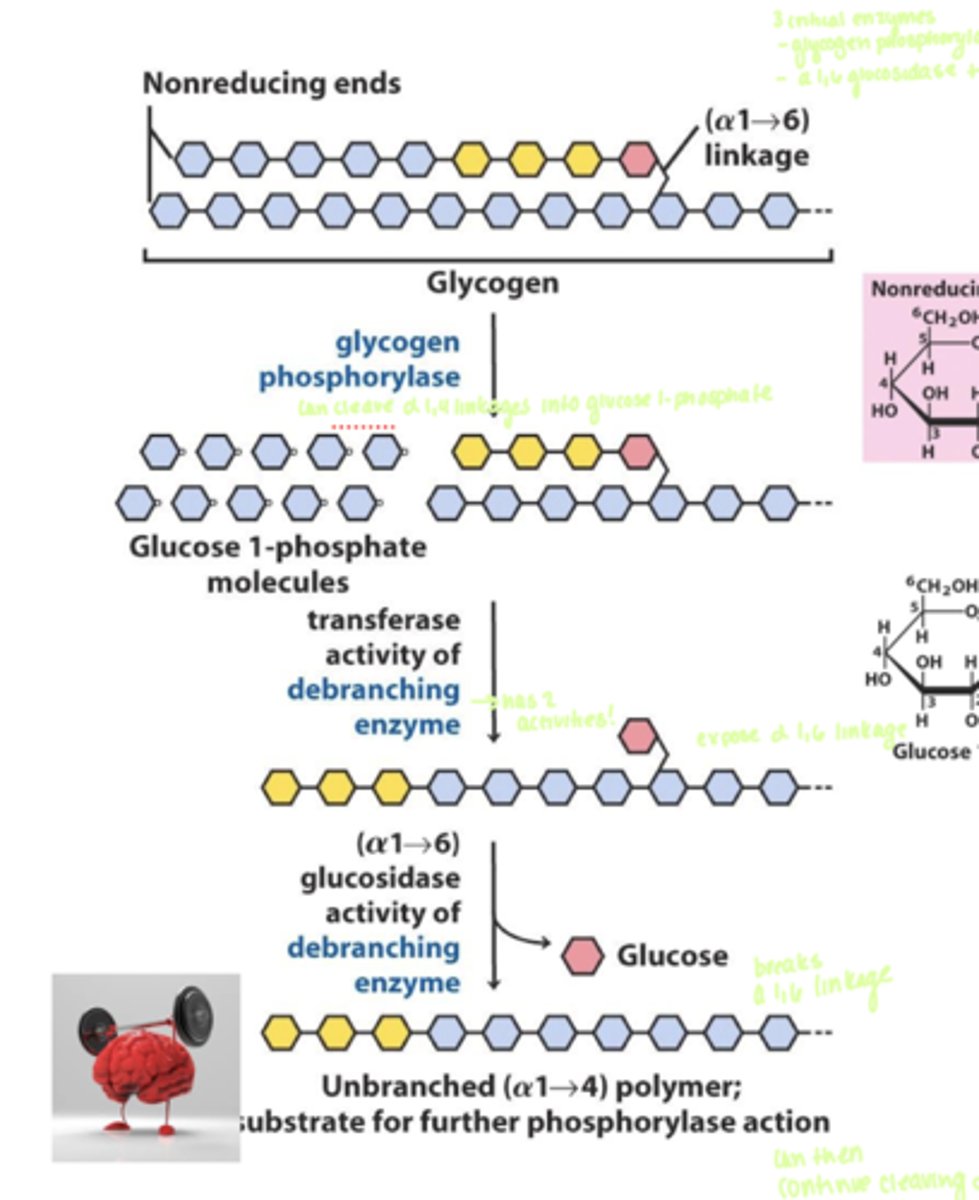
Why is glycogen branched?
Since glycogen phosphorylase must start at the end of a branch, more branching means glycogen can be broken down and release glucose into the blood faster. effcientiy
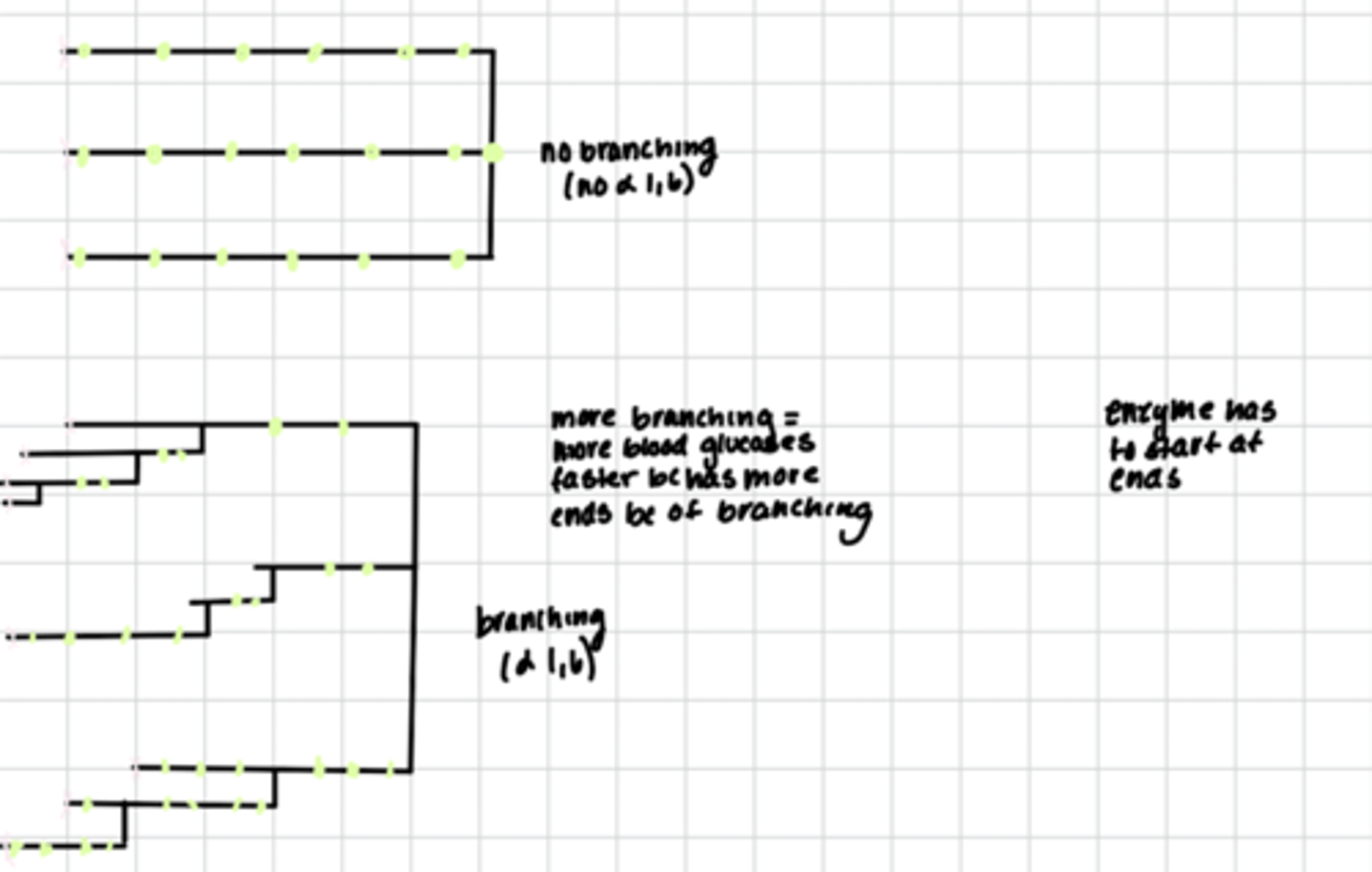
What happens to glucose 1-phosphate?
is degraded by phosphoglucomutase into glucose 6-phosphate
What happens to glucose 6-phosphate in just the liver?
is degraded by glucose 6-phosphatase into glucose + Pi
What happens to glucose 6-phosphate in the muscle and liver (rare)?
glucose 6-phosphate enter glycolysis
Why is glucose 6-phosphate not degrade into glucose and Pi in the muscle?
the muscle does not have glucose-6 phosphatase
Where can epinephrine bind?
the muscle and liver
Where can glucagon bind?
the liver
Draw the epinephrine and glucagon pathways
explain and draw how cAMP activates PKA
explain how Gsa gets activated
inactive PKA has the 4 units that are bounded together. 4 cAMP breaks the units apart and 2 each bind to the 2 regulatory units which activates the catalytic domains.
GSa when inactive is bounded to GDP. when epipinerhine/glucagon binds to the specific receptor, the GDP gets replaced with GTP. this activates the GSA and moves it to adenyl cyclase which forms cAMP.
Draw out glycogen synthesis
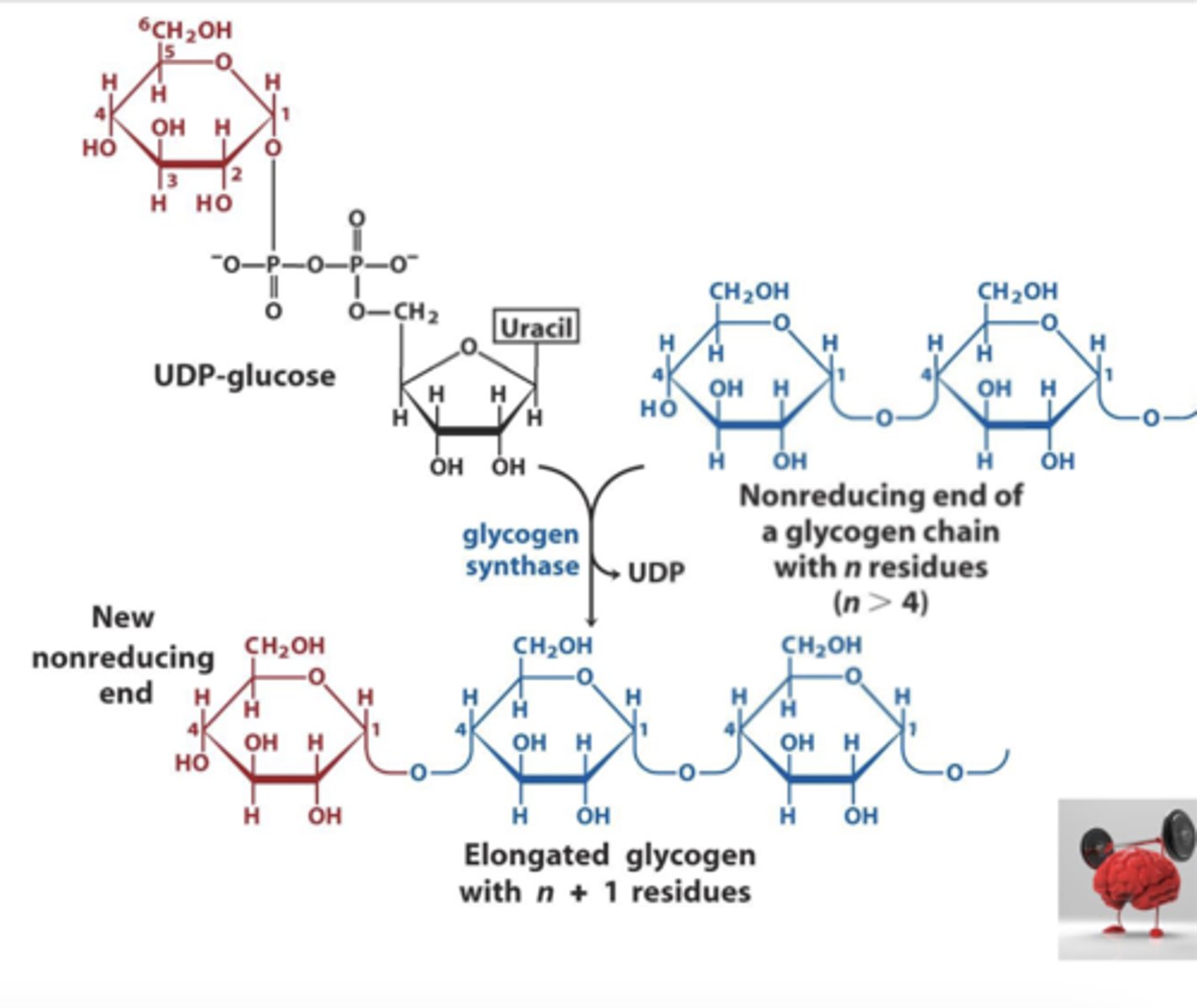
explain and draw the different transporters with glucose being released in the bloodstream